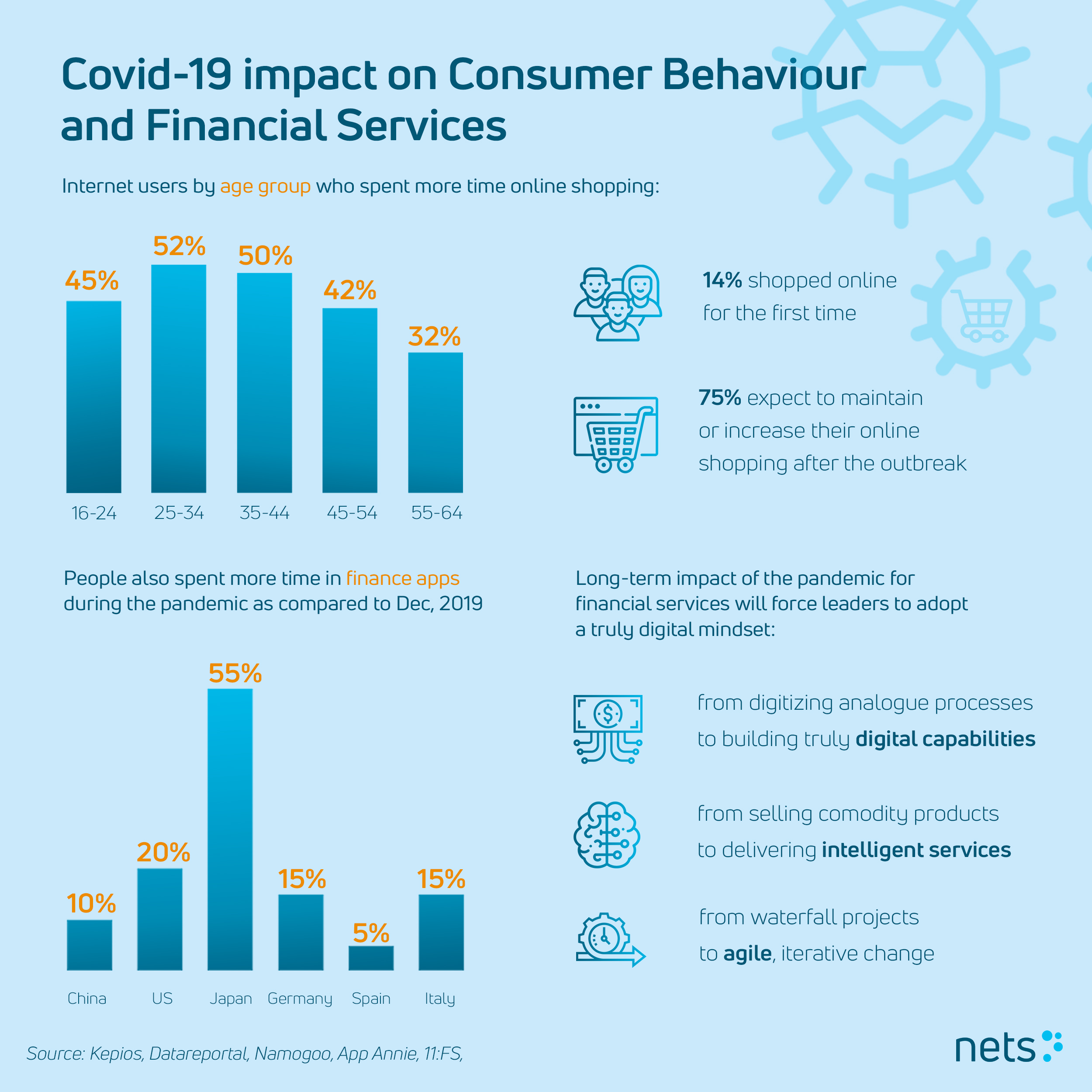By Sirpa Nordlund, Head of Industry Engagement, Nets.
There is an unforeseen pressure from giant technology companies towards retail banks. The most valuable part for a bank, the customer interface, is being taken over by BigTechs, in short GAFAs (Google, Apple, Facebook, Amazon, also known as The Four), who are slowly, but surely, becoming ever present in people's daily lives. During the past 6 months these players have launched a handful of new financial products infiltrating retail banking corner by corner.
At the same time "The Dragons"; Alipay and WeChat, are conquering the world outside of Europe and Americas with their broad selection of financial services products. The world has never been this congested with new, digital financial products being introduced in marketplaces traditionally dominated by banks.
A treasure chest of data
It is becoming almost folkloric to repeat the truth that GAFAs will never become banks. They won't, because they don't need to. Banks are heavily regulated entities with growing demand to fulfil compliance requirements. Instead, they use data insights provided by their platforms to attract the attention of consumers, which is then used to generate revenues for merchants. Analytics on clicks and latest purchases opens a treasure chest for combining the offers and targeting the carefully predicted next moves of the consumers. The future of financial services provided by BigTechs is an exciting, while also somewhat terrifying prospect. It is not inconceivable that in near future these companies will target people at almost every juncture of their lives – in their homes, on their various connected devices, whilst they are commuting to work in a self-driving car, at every interactive intelligent billboard they walk past – the data is gathered from more or less every moment of someone's existence.
Bridging the physical and digital world
The Covid-19 demonstrated a significant rise in use of digital financial tools, both in banking services as well as at merchants who saw an increase within e-commerce and mobile commerce. The rise was as high as 55%, and in most countries at least 15%. In many countries ordering groceries online took a steep rise, something that has been waited for a long time. Besides, during Corona times, consumers pay digitally by card or smartphone much more often, and above all contactlessly – especially in countries such as in the DACH region, where cash has been the predominant method of payment to date. Due to the Corona pandemic, politicians and retailers had pushed cashless and contactless payment to minimize the risk of infection. And consumers have understood that this form of payment is more hygienic than using cash. In general, the pandemic has pushed us further towards a digital era, accelerating the uptake of digitals services, tools and speeding up the European transition to digital commerce.

Infographics from article in Die Bank.
Meanwhile it has also revealed a wide chasm between companies who have been slow followers compared to digital leaders. Consumers have not only gone online for their routine shopping errands and financial services, but also plan to do so also in the future. Some 14% shopped online for first time during pandemic, and as much as 75% plan to keep on shopping after the crisis is over. While banks have limited the visits to branches, the differences in their level of digitisation has become evident. Some might have gotten their reputation dented, if for example fully digitized KYC has not been available and prevented using the services seamlessly. A smoothly operating payment infrastructure with full stack digitisation services is a must-have in designing customer journeys that combine both physical and digital worlds. This is where BigTechs are setting the benchmark on user experience, both in commerce and in their newly launched payment services.
The gold rush of GAFAs to financial services started accelerating in November 2019, when Google announced the launch of Google current accounts. Since then, there have been a series of shots towards retail banking products by launches of Facebook Pay, Amazon's Pay Later, Google's hpayment card and Uber Wallet. Given the threat of consumers increasingly migrating their transactions towards platforms controlled by BigTechs and used dozens of times a day, the expectations towards their financial service providers, retail banks, is only expected to grow.
Stay relevant by fighting on the front line
In the last crisis banks were a central part of the problem. During Covid-19 banks have been seen as a solution as they have done what they can to help their customers preserve their health by offering a wider range of digital services also providing more clarity and transparency to their customers in distress. In times of crisis, the financial vulnerability increases, and this is where banks have been able to help by navigating their customers through the complexity for them to make the best possible financial decisions given the circumstances.
This period has also been a firm reminder for the banks, that they need to be present in the front line where the battle for retail financial services is being fought. The importance of trust is immense. The key trust principles of serving customers during a crisis are simplicity, awareness, transparency, clear expectations and frequent status updates. Enhancing digital self-services in is essential to increase operational efficiency and comply with the changing customer demands.
Improving the customer experience and operational efficiency simultaneously is a difficult task to solve. In the Nordics, the most digitized region of the world, this has best been achieved by combining the knowledge and the processes executed in the back-office. The engine room is being run by the payment processor, and the front line, the customer services design, is governed by the bank. But this clear segregation of duties also means, that the data insights available is not fully used to add value in the product designs and where the interaction with the end-customer takes place. A fully digitized dispute service is a prime example of how a fruitful co-operation can play out – with the bank on the front line and a trusted partner delivering the service, providing insights and diminishing the complexity powered by their service provider.
Banks who are willing to share the responsibility of designing the customer interface with their payment service provider will not only reap the traditional cost- and scale benefits of outsourcing. They will also get access to valuable data insights often hidden in the back-end of the business operation. This is where the magic lies if you want to build truly value-adding and customer-centric digital financial services.

The Covid-19 demonstrated a significant rise in use of digital financial tools, both in banking services as well as at merchants who saw an increase within e-commerce and mobile commerce.

